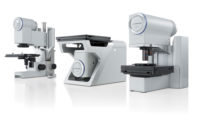In order to remain competitive in today’s global economy, manufacturing companies are working to improve efficiency, productivity and quality. To do so, they must proactively prevent defects instead of corrective action.
Traditional quality control methods tend to react to problems through inspection and sorting, while continuous improvement methods, such as Six Sigma Quality and Lean Six Sigma (LSS), prioritize early detection. Continuous improvement requires data and secure statistical methods to diagnose and prevent issues. This can result in long-term reduction of variation, lowering defective parts by millions.
This is where Statistical Process Control (SPC) can be of help. Indeed, many contract manufacturers already use SPC and other statistical to reduce variation and continuously improve their operations.
However, they may encounter roadblocks when they do implement it.
According to the Consumer Product Safety Commission, large U.S. manufacturers spends $20M in warranty costs per $1B in revenue. Consumer product and automotive recall costs amount to more than $700 Billion annually. These excessive costs are evidence that manufacturers still have a long way to go in preventing errors with SPC.
For example, some organizations still use manual data entry and collection, which is slow and leaves room for plenty of human error.
Automating data is a more precise and effective alternative. By inputting data directly from measuring instruments into an SPC program, you can remove human error and enable real time data analysis.
In addition to collecting a correct computerized record, automated SPC software helps organizations manage entire processes based on measurement tool data.
For example, operators can feed part measurements directly to a PC that has been programmed to tell them when measurements fall outside specific tolerances. Such automation boosts efficiency and, of course, quality.
Other organizations get into trouble when they treat SPC as a quality sampling plan instead of a process improvement initiative.
In order for SPC implementation to succeed, the whole manufacturing organization must buy in. In other words, a manufacturer should treat it as an enterprise initiative and integrate it into their current technology infrastructure.
Through proper training and vision, management can make this possible. Without management’s support, SPC efforts will fail.
Some operators are challenged by the new process. For example, they might view control charts as extra work. Front-line operators are those responsible for distributing and collecting SPC control charts to machine operators. Some operators might feel that an automated process undermines their authority and their own expertise. In reality, even the most experienced operator makes mistakes.
Some operators incorrectly assume that SPC charts exist to oversee them instead of the process. They may worry that they will be blamed if the chart finds a negative change. In reality, operators are not able to identify the causes of change since they are not responsible for supplier selection, quality, and maintenance, among other important factors.
When organizations correctly use SPC programs, they can successfully prevent problems, reduce variation, and ultimately become more competitive.



